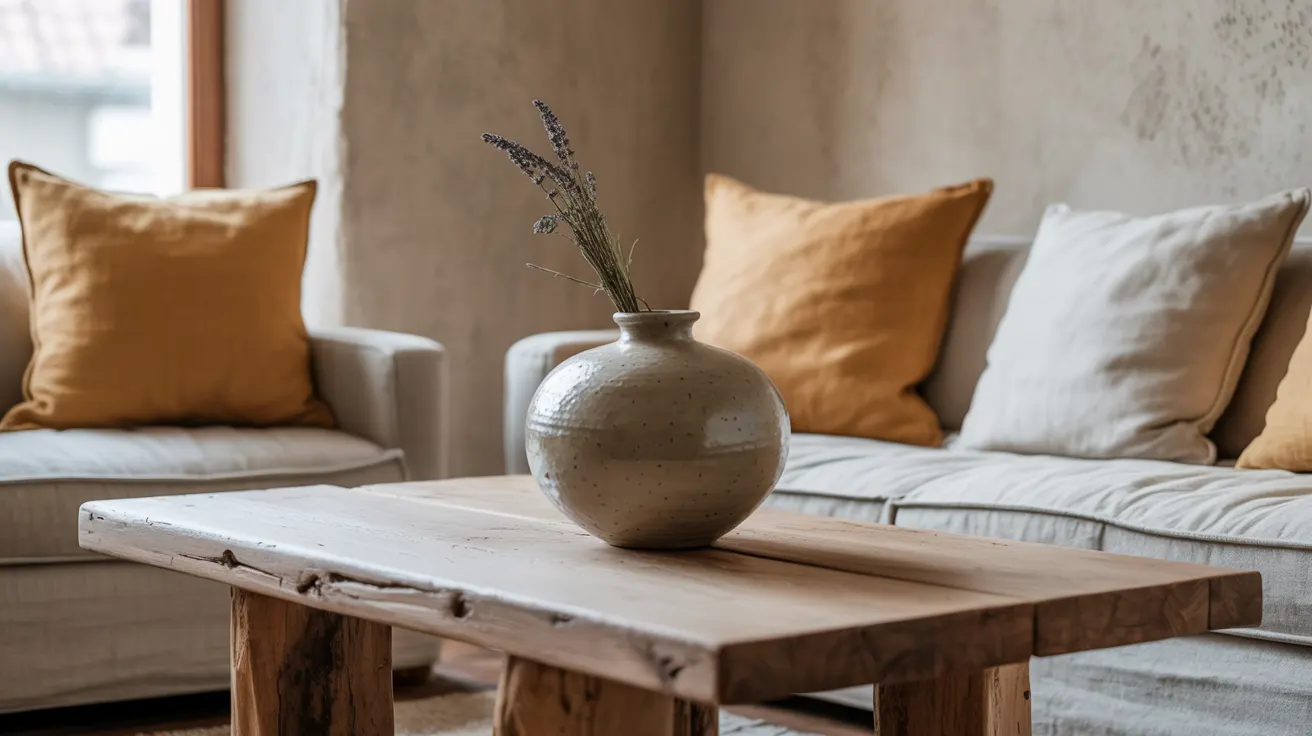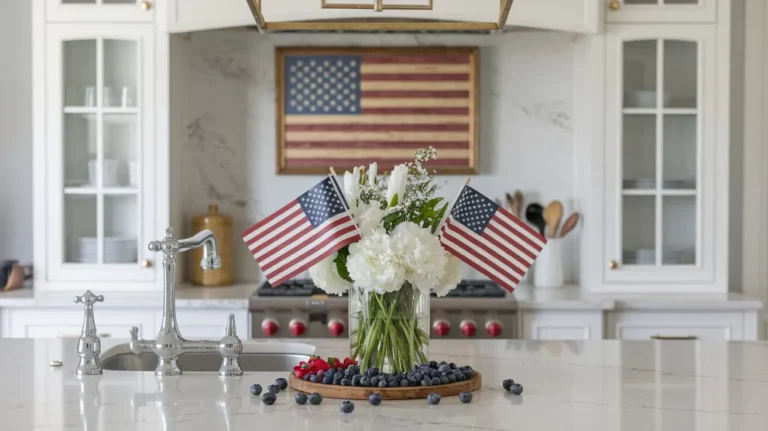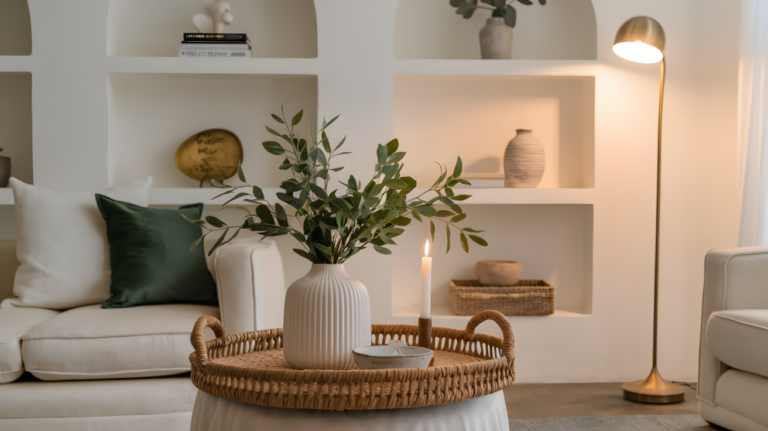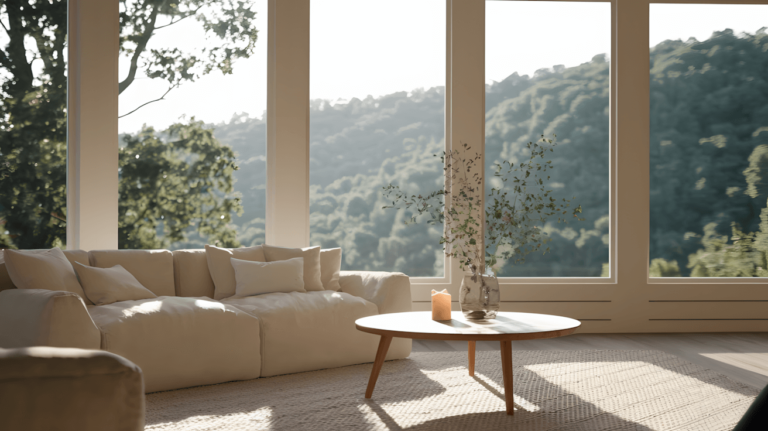In a world obsessed with perfection, there’s something profoundly refreshing about a design philosophy that celebrates the perfectly imperfect. Enter wabi-sabi—the Japanese approach to finding beauty in imperfection, simplicity, and the natural aging of things.
I’ve been drawn to wabi-sabi living spaces for years, and not just because they’re trending on Pinterest. There’s something deeply calming about a room that feels authentic rather than staged, lived-in rather than showroom-perfect. If you’re craving a home that feels both beautiful and genuinely peaceful, wabi-sabi might be your design soulmate.
Let’s explore how to bring this serene, intentional aesthetic into your living room—without breaking the bank or forcing you to throw out everything you own.
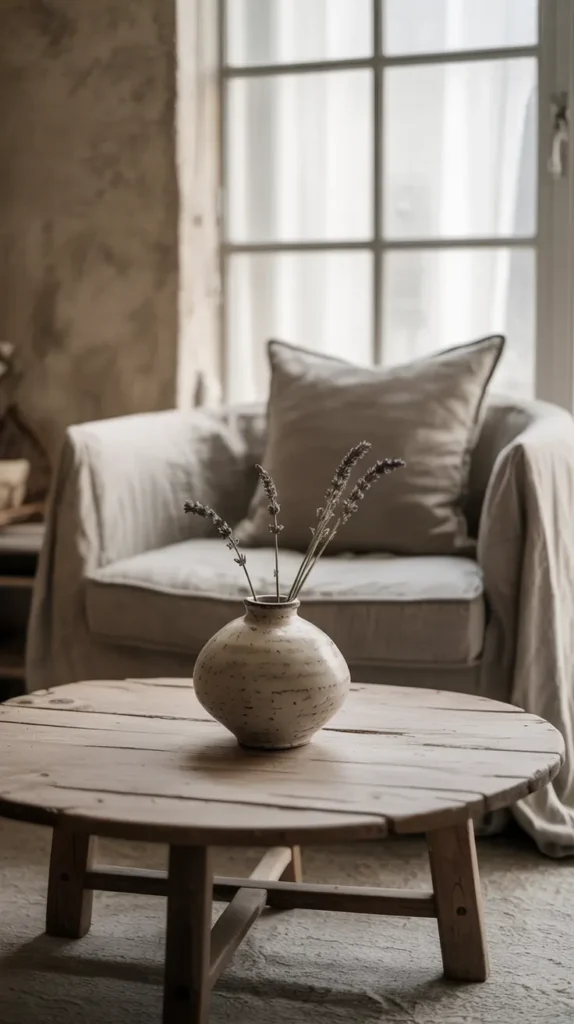
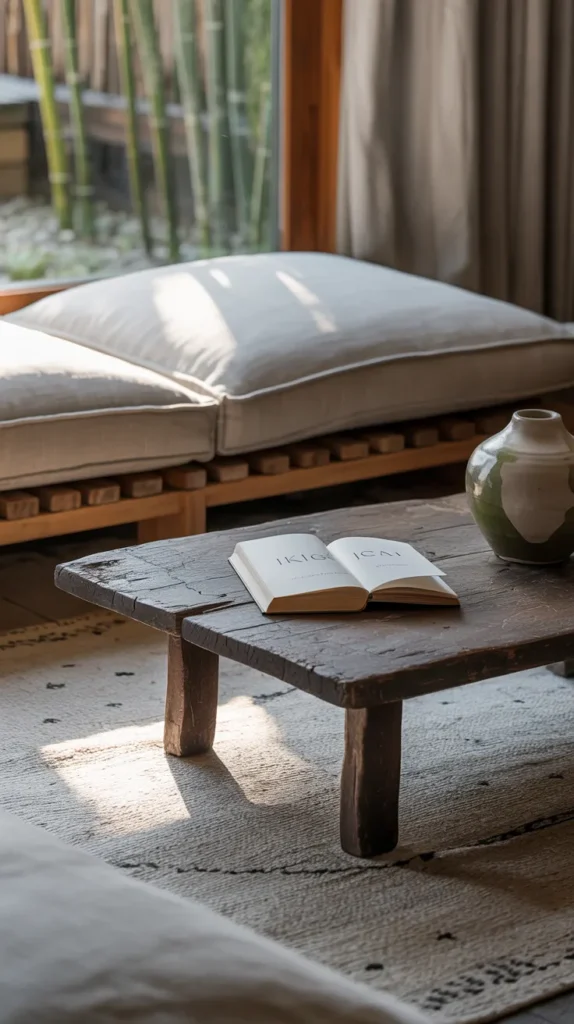
What Exactly Is Wabi-Sabi, Anyway?
Before we dive into specific ideas, let’s get clear on what we’re talking about. Wabi-sabi isn’t just another trendy design term—it’s a centuries-old Japanese philosophy with deep cultural roots.
At its heart, wabi-sabi embraces three simple truths:
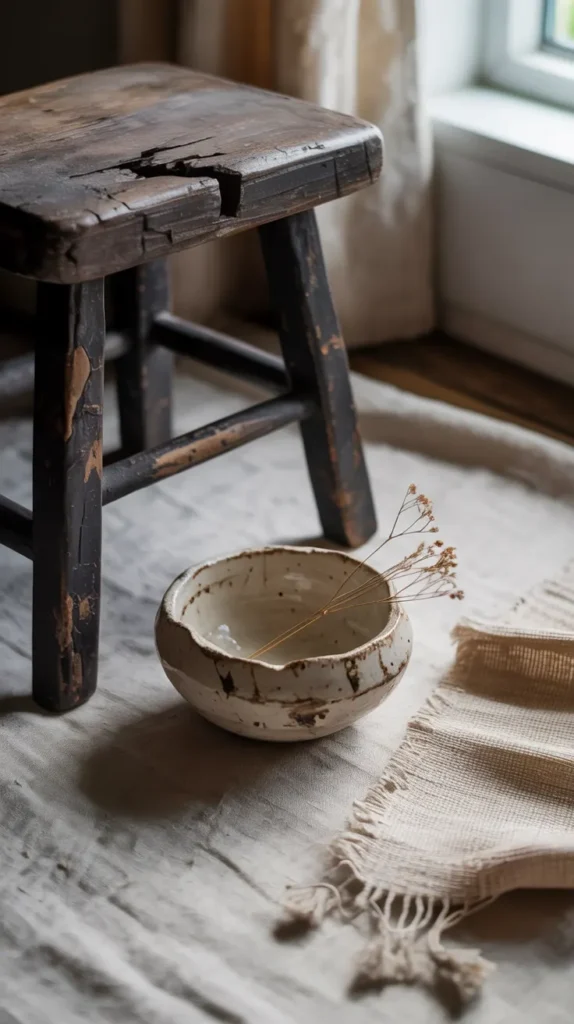
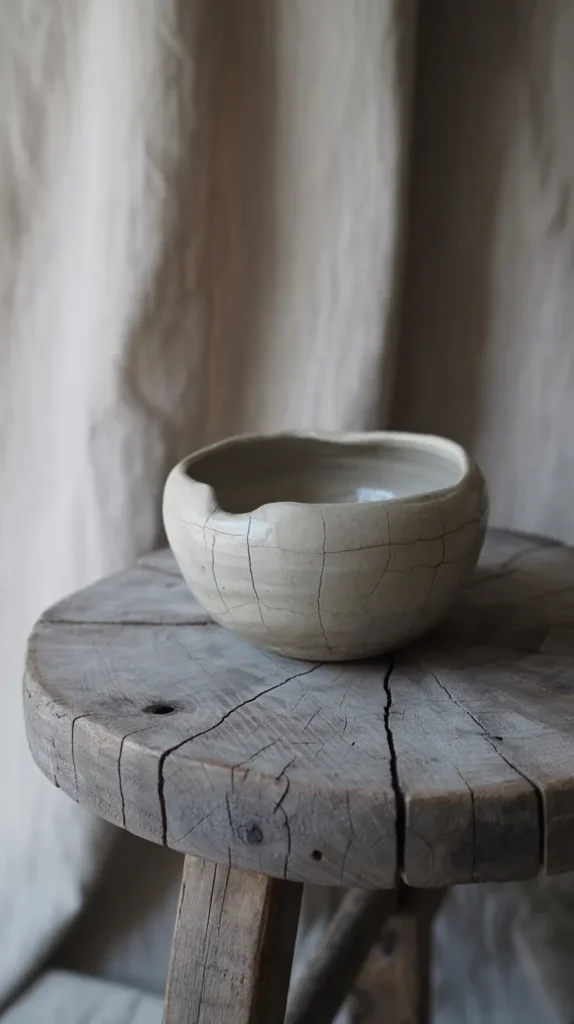
- Nothing lasts (impermanence)
- Nothing is perfect (imperfection)
- Nothing is finished (incompleteness)
Rather than fighting against these realities, wabi-sabi accepts and even celebrates them. That crack in your favorite ceramic bowl? The weathered patina on your wooden coffee table? The slightly uneven weave of a handmade blanket? In wabi-sabi, these aren’t flaws to be fixed—they’re features to be appreciated.
What I love most about this approach is how fundamentally human it feels. In a culture that often pushes us toward impossible standards, wabi-sabi reminds us that beauty exists in our rough edges and natural evolution.
Embrace Natural Materials (And Let Them Age Gracefully)
The foundation of any wabi-sabi living room is natural materials in their most honest forms. This isn’t about the latest faux-natural finishes—it’s about materials that genuinely come from the earth and are allowed to show their true character.
Some beautiful natural elements to incorporate:
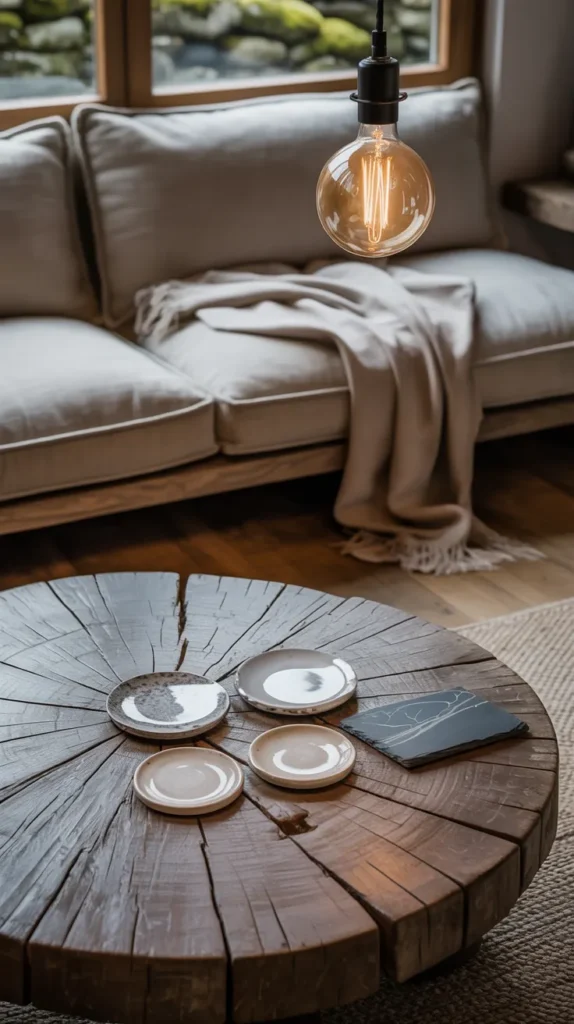
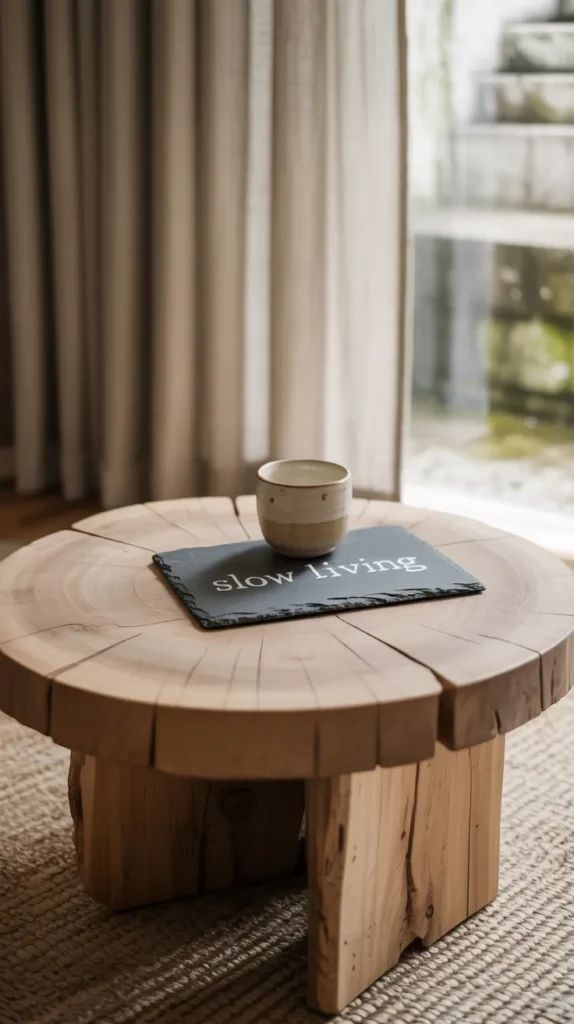
- Unfinished or lightly finished wood that will develop a patina over time
- Stone elements like slate coasters, marble side tables, or river rock decorative pieces
- Clay and ceramic pieces with visible hand-marks or slight variations
- Natural fibers like linen, cotton, hemp, and wool in their organic, undyed states
The key is to choose materials that will age beautifully rather than just deteriorate. There’s a difference between graceful aging and poor quality, after all. Look for solid wood over veneer, real stone over plastic imitations, and natural fibers over synthetics.
I recently helped a friend update her living room with wabi-sabi elements, and her favorite addition was a reclaimed wood coffee table with visible knots, nail holes, and worn edges. Every mark tells a story, and the table becomes more beautiful with each new scratch or water ring—a living record of her family’s life.
Pro tip: You don’t need to replace all your furniture at once. Start by adding one statement piece made from natural materials, like a solid wooden side table or a stone lamp base. Let this piece become the anchor for your wabi-sabi transformation.
Focus on Minimalism (But Not the Sterile Kind)
Wabi-sabi embraces minimalism, but not the stark, everything-hidden-away kind that can make a space feel like a museum. Instead, it’s about thoughtful curation—keeping only what serves a purpose or brings genuine joy.
This mindful approach to possessions means:
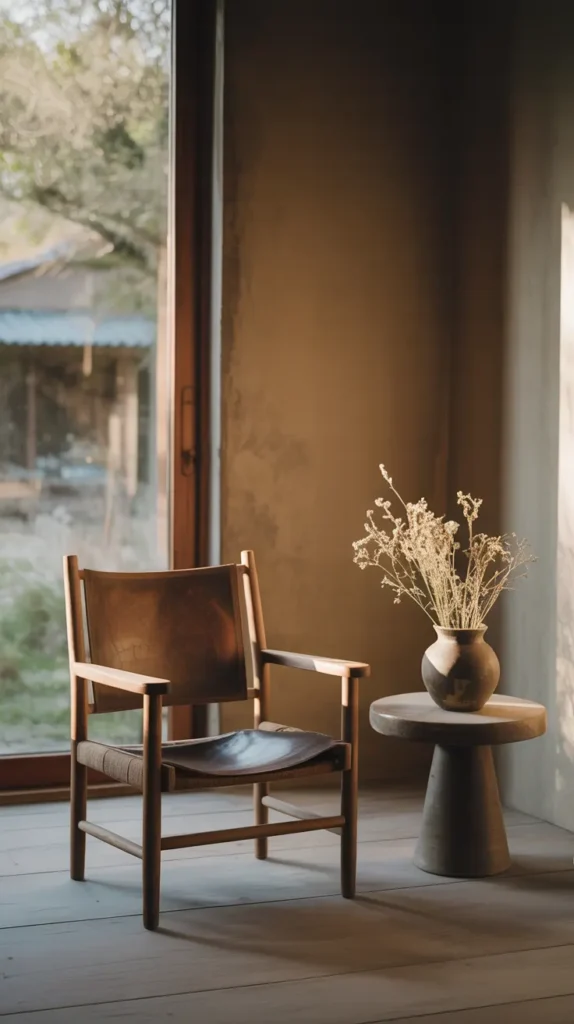
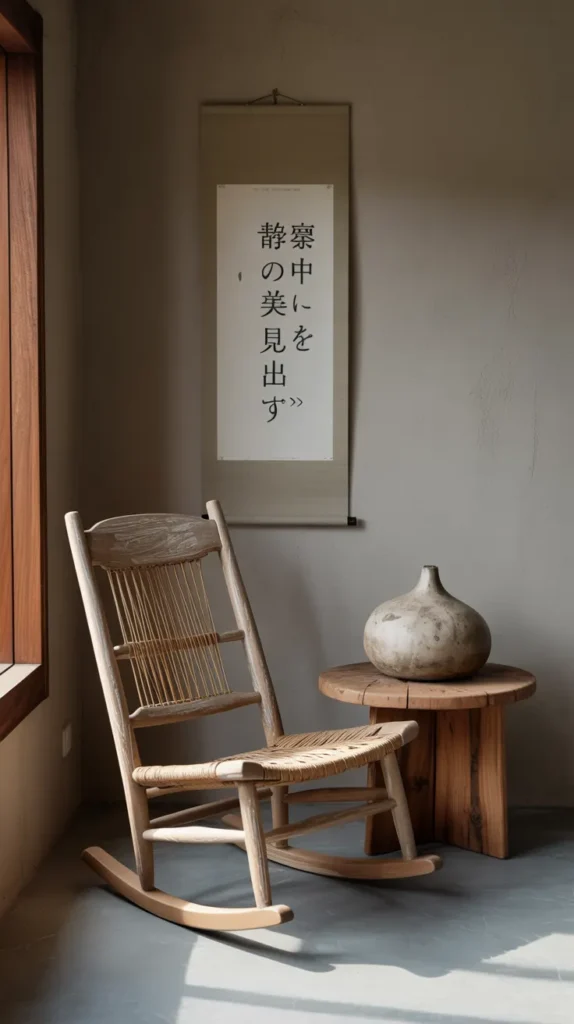
- Evaluating each item in your living room with fresh eyes
- Removing anything that feels like visual noise or doesn’t serve a purpose
- Creating breathing room around special pieces so they can be truly appreciated
- Favoring quality over quantity in everything from furniture to decorative objects
The result is a space that feels intentional yet lived-in. Nothing matches too perfectly, nothing screams for attention, and everything has room to be seen and appreciated for exactly what it is.
When I embraced this aspect of wabi-sabi in my own home, I was surprised by how much lighter I felt. There’s something genuinely freeing about letting go of the excess and creating space—both physically and mentally. Suddenly, I noticed the beautiful grain pattern on my wooden armchair that had been hidden beneath piles of “stuff.”
Celebrate Imperfections (They’re What Make Your Space Unique)
Perhaps the most revolutionary aspect of wabi-sabi is its celebration of imperfection. Instead of hiding flaws, wabi-sabi puts them center stage and recognizes their unique beauty.
Ways to embrace beautiful imperfection:
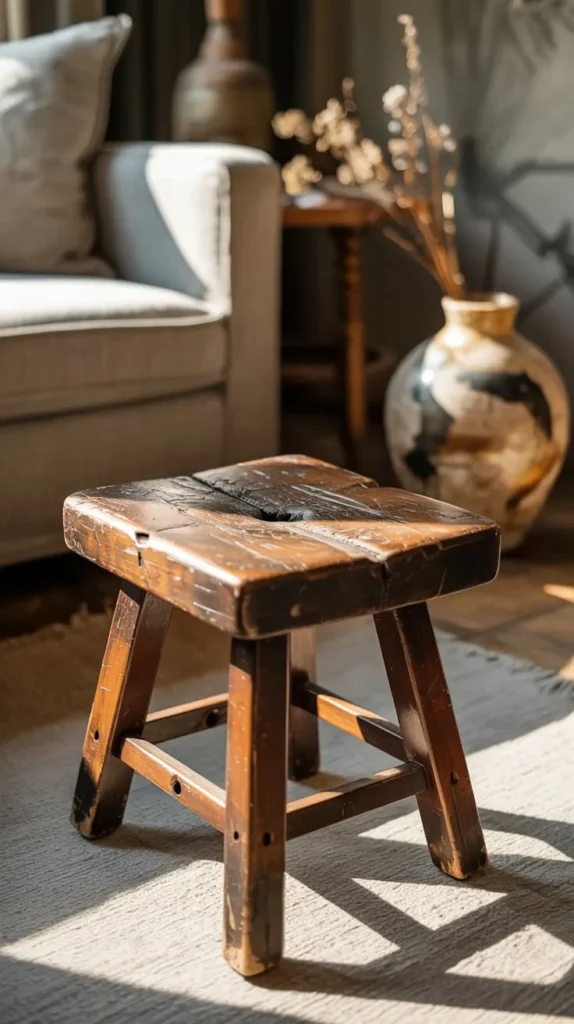
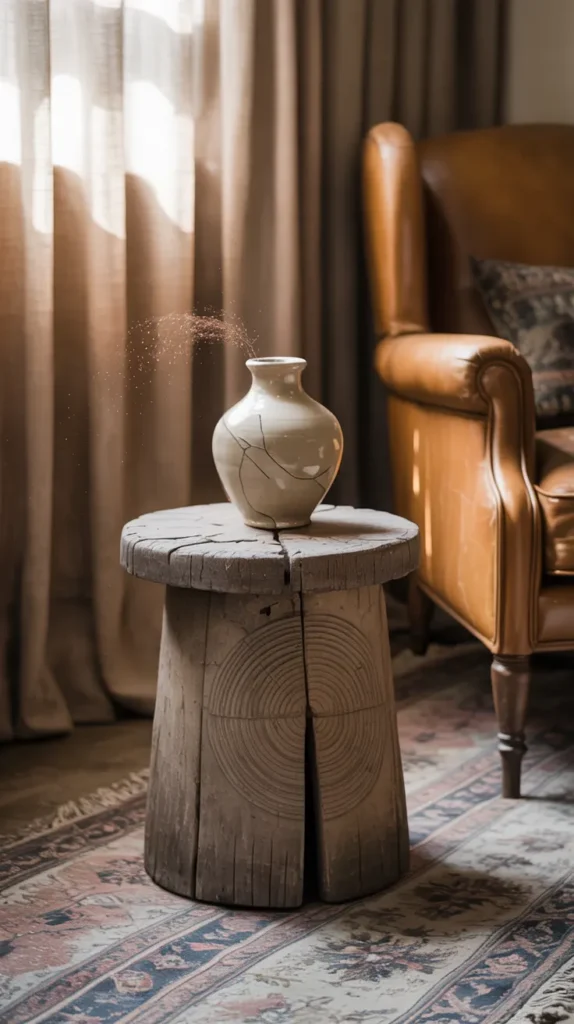
- Choose handmade ceramics with slight variations over mass-produced perfect pieces
- Look for vintage or antique furniture that shows its history through wear patterns
- Appreciate the natural variations in wood grain, stone veining, or hand-loomed textiles
- Allow materials to weather naturally rather than refinishing at the first sign of wear
This approach is particularly meaningful in a world of mass production, where thousands of identical items roll off assembly lines. Imperfections remind us of the human hands that created an object, or the years of use that have left their mark.
I have a ceramic mug with a slightly wobbly rim where the potter’s fingers shaped the clay. Every morning when I drink my coffee, that imperfection reminds me that a real person made this vessel with their hands. That connection feels increasingly precious in our digital age.
Use a Muted Color Palette (Think Nature, Not Paint Swatches)
The color palette of a wabi-sabi space isn’t drawn from trend forecasts or paint company color of the year announcements. Instead, it’s inspired by the natural world—think of the subtle colors of stones, soil, plants, and clay.
A wabi-sabi living room typically features:
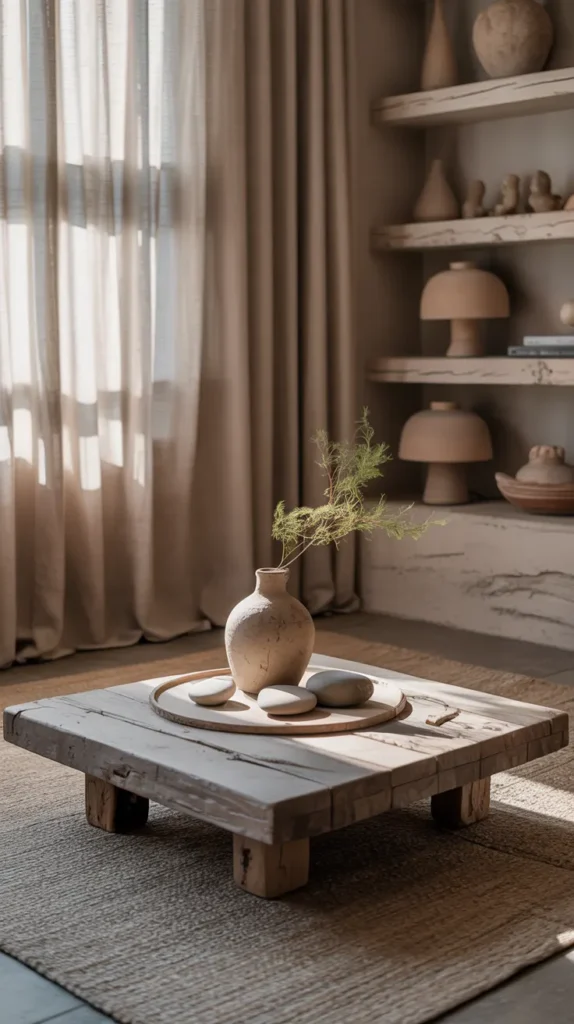
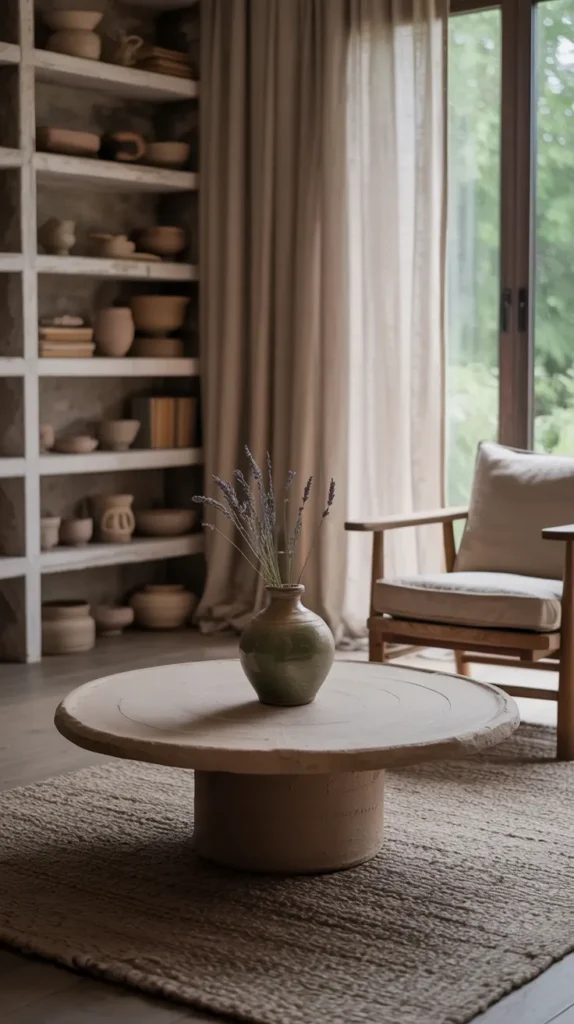
- Earth tones like warm browns, soft taupes, and gentle grays
- Muted greens reminiscent of moss or sage
- Soft whites that feel natural rather than brilliant white
- Occasional touches of indigo or rust as accent colors
The overall effect should feel like a walk in nature—harmonious, subtle, and soothing to the eye. These colors create a perfect backdrop for the natural materials and thoughtfully chosen objects that define wabi-sabi spaces.
When choosing colors for your wabi-sabi living room, look to the natural world for inspiration. The gray-brown of weathered wood, the soft green of lichen on stone, the warm beige of unbleached linen—these colors have a depth and subtlety that manufactured colors often lack.
Integrate Nature (Bring the Outside In)
In wabi-sabi design, the boundary between indoors and outdoors becomes beautifully blurred. Natural elements don’t just influence the design—they become part of it.
Ways to bring nature into your living room:
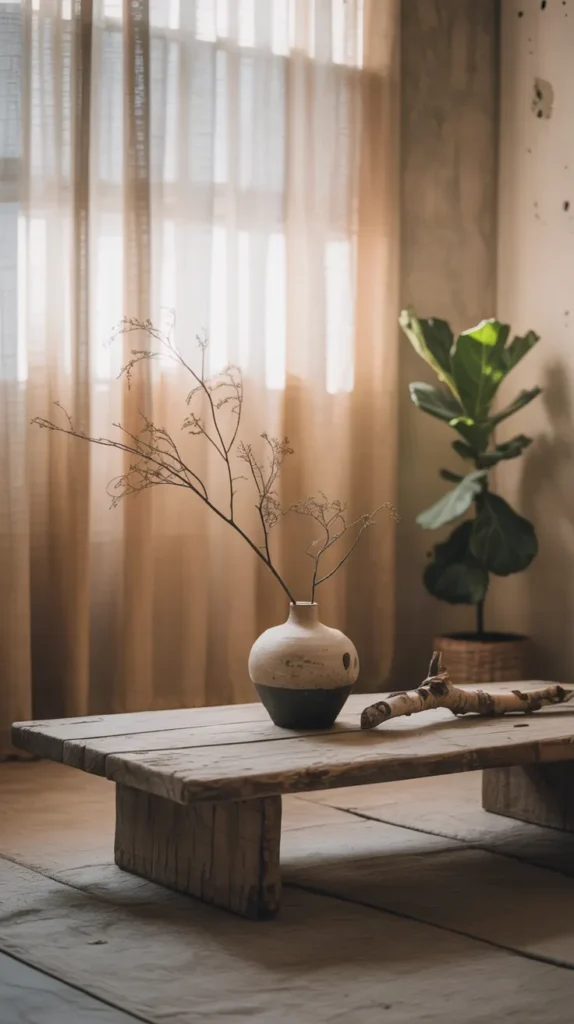
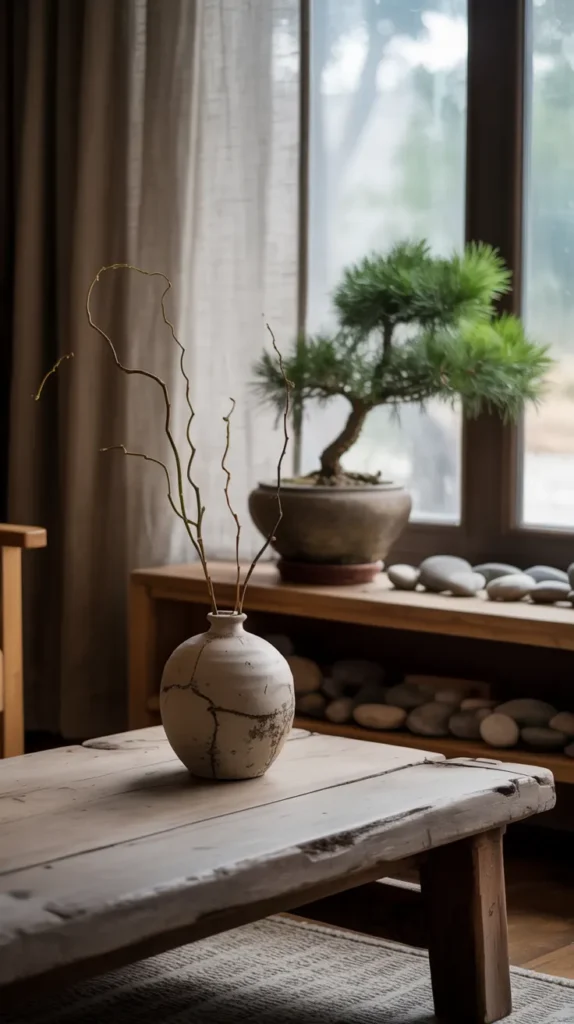
- Incorporate houseplants that bring life and movement to the space
- Display found natural objects like interesting stones, driftwood, or pinecones
- Arrange seasonal flowers or branches in simple vessels
- Maximize natural light through sheer window coverings
What makes this different from other design approaches is the emphasis on natural cycles and seasonal changes. Unlike perfectly maintained silk plants or preserved flowers, living plants change, grow, and sometimes even struggle—all part of the wabi-sabi appreciation of impermanence.
My favorite wabi-sabi touch in my living room is a large branch I found after a storm. Instead of an expensive sculpture, this weathered piece of nature stands in a corner, its interesting shape casting beautiful shadows as the light changes throughout the day. It cost nothing but brings me joy every time I look at it.
Create a Sense of Tranquility (The Real Point of It All)
At its heart, wabi-sabi isn’t just about how your space looks—it’s about how it makes you feel. The ultimate goal is to create a living room that feels like a sanctuary from the chaos and constant stimulation of modern life.
Elements that contribute to tranquility include:
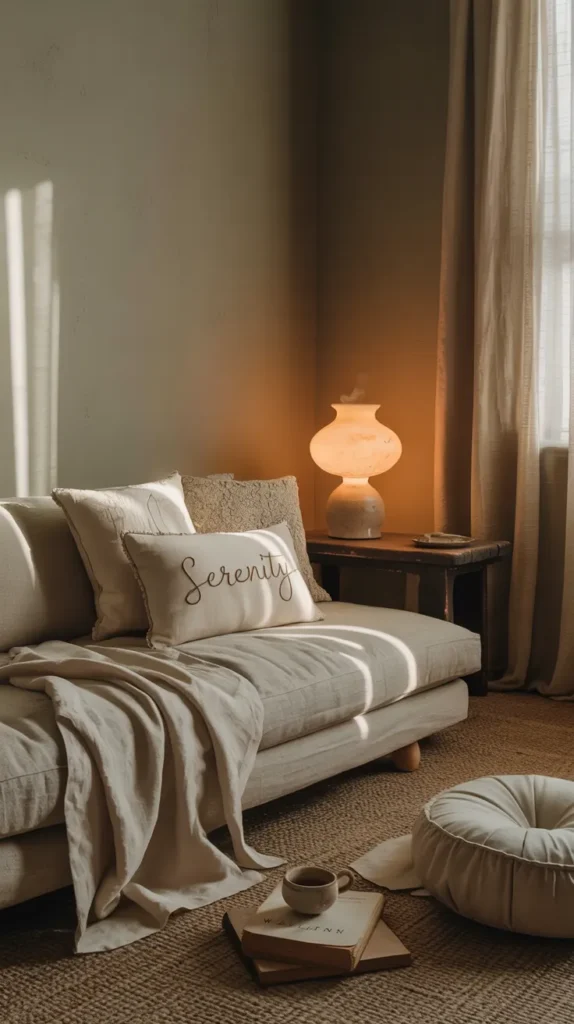
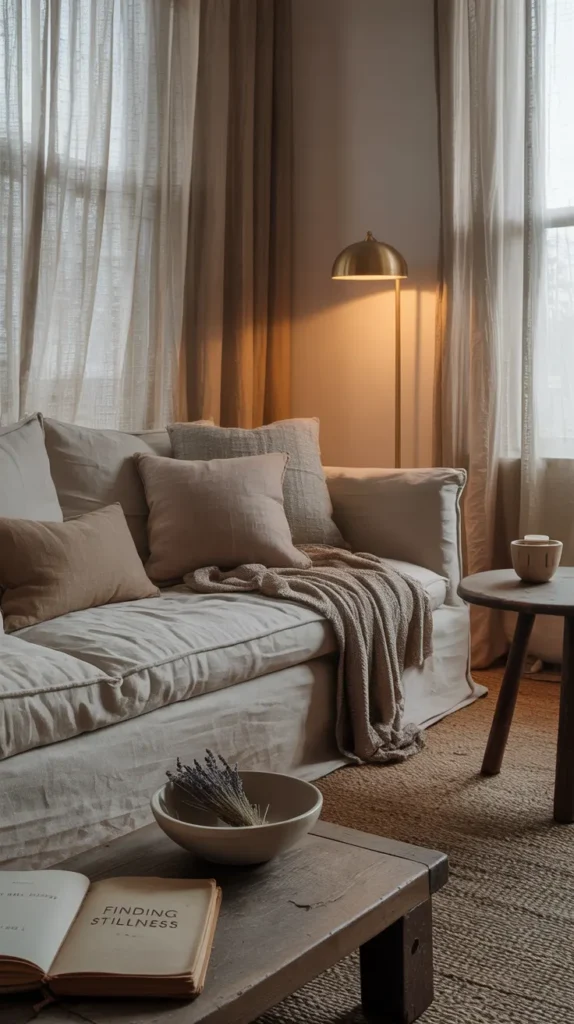
- Comfortable seating that invites relaxation rather than just looking good
- Soft, warm lighting instead of harsh overhead fixtures
- Textural elements that engage your sense of touch
- Meaningful objects that bring personal joy and connection
I believe this is where wabi-sabi truly shines compared to more trend-driven design approaches. By focusing on creating a feeling rather than achieving a specific “look,” you end up with a living room that serves your well-being first and foremost.
One of the simplest ways to bring tranquility to your space is through thoughtful lighting. Harsh overhead lights can be replaced with warm-toned floor and table lamps. Candles can add a flickering, gentle glow. Natural light can be filtered through sheer curtains to create a soft, diffused effect.
Living With Wabi-Sabi (It’s a Practice, Not a Perfect End Result)
The beauty of wabi-sabi is that it’s more of a philosophy than a rigid set of design rules. It’s something you practice rather than something you achieve once and for all.
Over time, your wabi-sabi living room will:
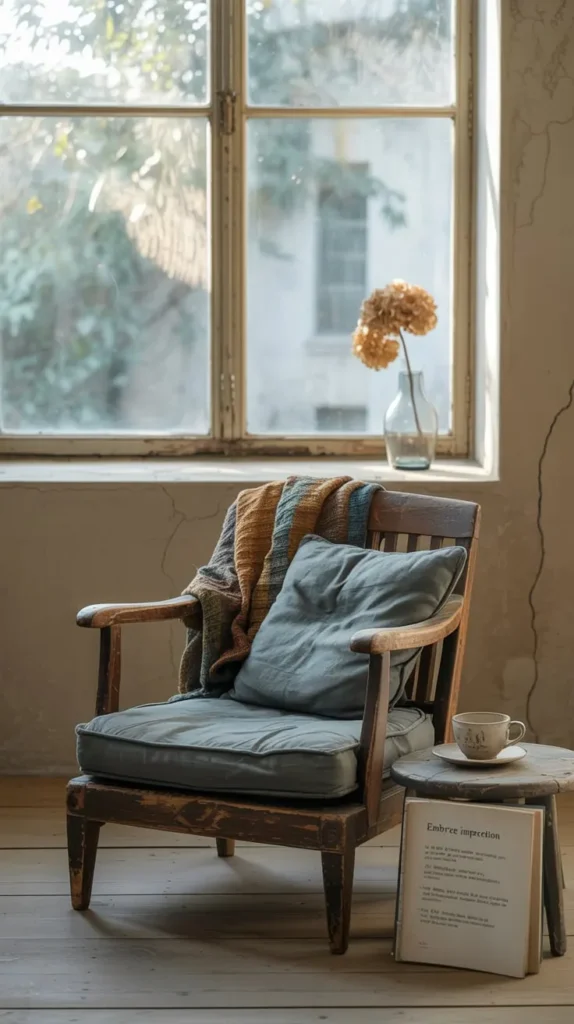
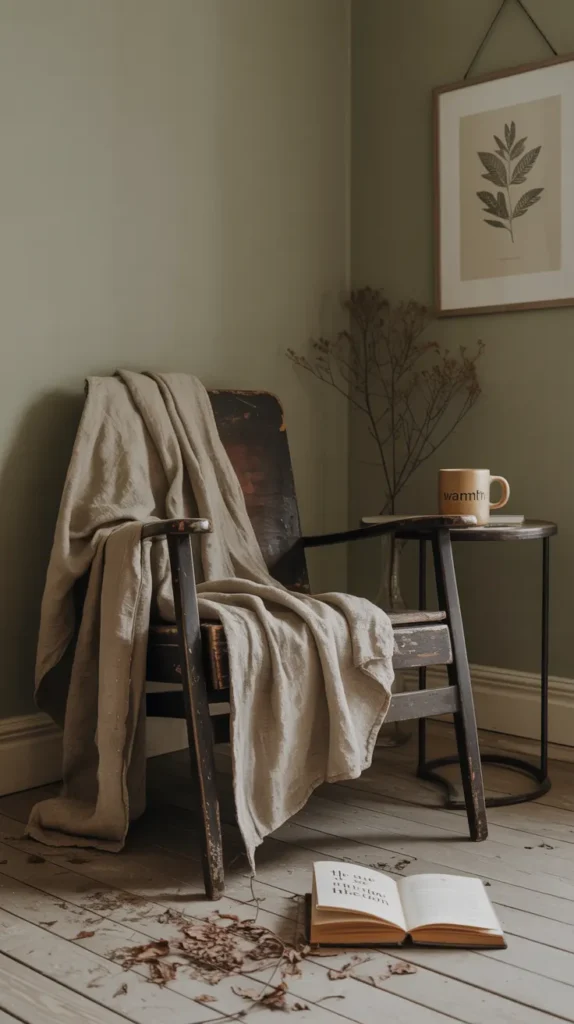
- Develop its own patina of use and care
- Evolve as you add and remove objects mindfully
- Reflect the natural changes of your life and the seasons
- Become increasingly personal and unique to you
This living, breathing quality is what sets wabi-sabi apart from more static design approaches. Rather than creating a “finished” space that you then try to maintain in pristine condition, you’re creating a foundation that will grow and evolve beautifully over time.
I find there’s something deeply liberating about this approach. That water ring on the wooden table? It’s not a mistake to be fixed—it’s part of your home’s story. The sun-faded area of your linen curtains? That’s a beautiful record of light and time in your space.
Getting Started: Simple Wabi-Sabi Updates Anyone Can Try
You don’t need to overhaul your entire living room to begin incorporating wabi-sabi principles. Here are some simple starting points:
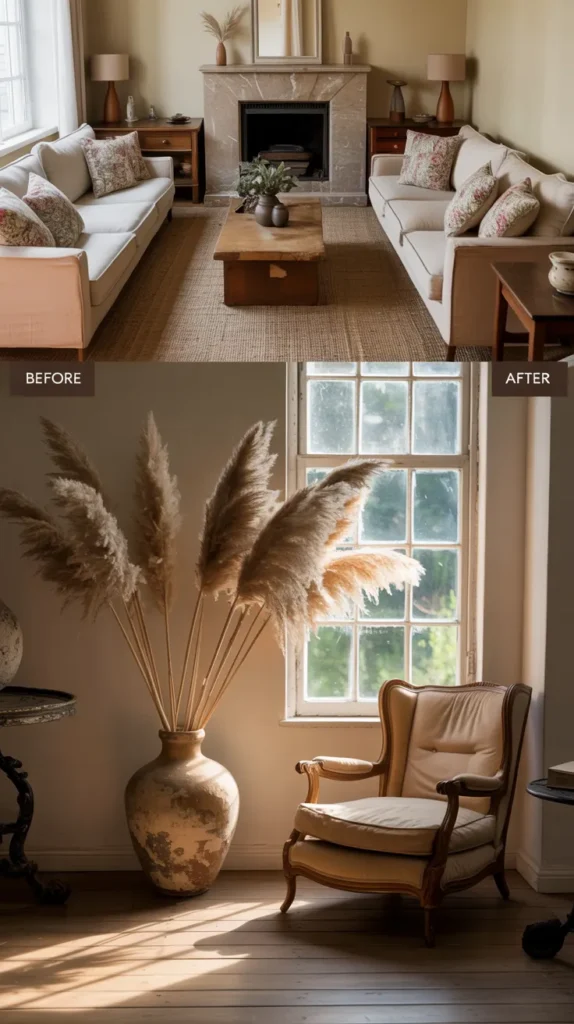
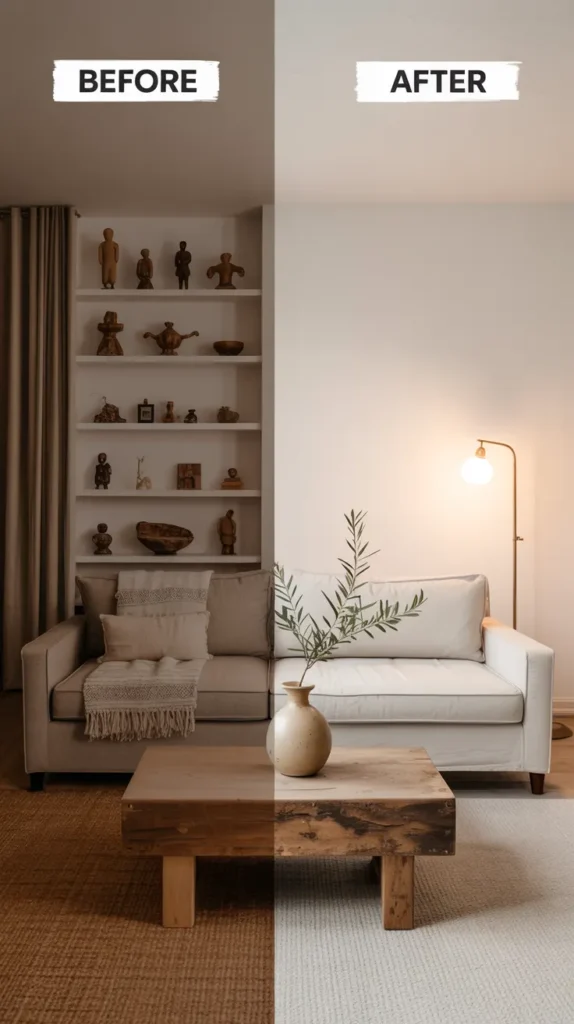
- Edit thoughtfully — Remove one thing from your living room that doesn’t bring you joy or serve a purpose. Create some breathing room.
- Add something handmade — A ceramic vessel, a hand-loomed throw, or a piece of artisan-made furniture connects your space to human hands and craftsmanship.
- Bring in something natural — A simple stone, a branch in a vase, or a small plant adds life and connection to the natural world.
- Rethink your lighting — Replace harsh overhead lighting with softer lamps, or simply add candles for a warm glow.
- Appreciate what you already have — Look at your existing pieces with fresh eyes. The worn arms of your favorite chair, the slightly faded fabric of a beloved pillow—these “imperfections” have their own beauty.
What I love most about wabi-sabi is how accessible it is. Unlike design styles that require buying specific pieces or achieving a particular “look,” wabi-sabi is about shifting your perspective and appreciating what might already be right in front of you.
So go ahead—embrace the cracks, celebrate the wear, and find beauty in imperfection. Your living room (and your peace of mind) will thank you. ✨

